Sakae-hashi Bridge
The RC Lohse girder bridges groupe designed by Takeshi Nakajima in Nagano Prefecture, Japan, which was selected as a Civil Engineering Heritage in 2002.
Five bridges were selected for the award, and I went to check one of them, Sakae-hashi Bridge.
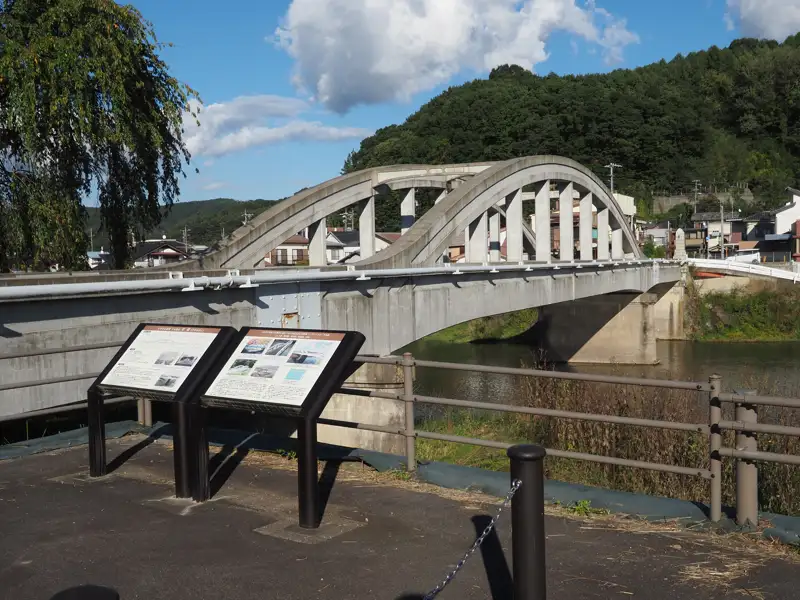
Sakae-hashi Bridge is located in Sakuho Town, Minamisaku County.
The bridge crosses the Chikuma-gawa River from east to west, and there is an explanatory board in the parking lot on the west side of the bridge.
I will write the history of Sakae-hashi Bridge following the explanation board.
The name of the bridge comes from “Sakae Village,” which existed from the Meiji Period to the Showa Period.
Sakae Village, established in 1889, merged with Kaise Village to form Saku Town in 1950, and then merged with Yachiho Village to form the current Sakuho Town in 2005.
As far as can be confirmed, the first bridge was built here in 1899. Since then, the bridge has been repaired and replaced.
In 1915, the railroad opened to Haguroshita Station, and Sakae-hashi Bridge began to play an increasingly important role in the community.
In 1920, the suspension bridge was replaced, and a photo of the inauguration ceremony held in November is on the explanatory board.
The reinforced concrete bridge that was built in 1938 to replace the old suspension bridge is now Sakae-hashi Bridge.
During the war, the bridge name plate and lighting fixtures were removed due to metal recovery, but repair work conducted from 2012 to 2014 restored the bridge to its original appearance.
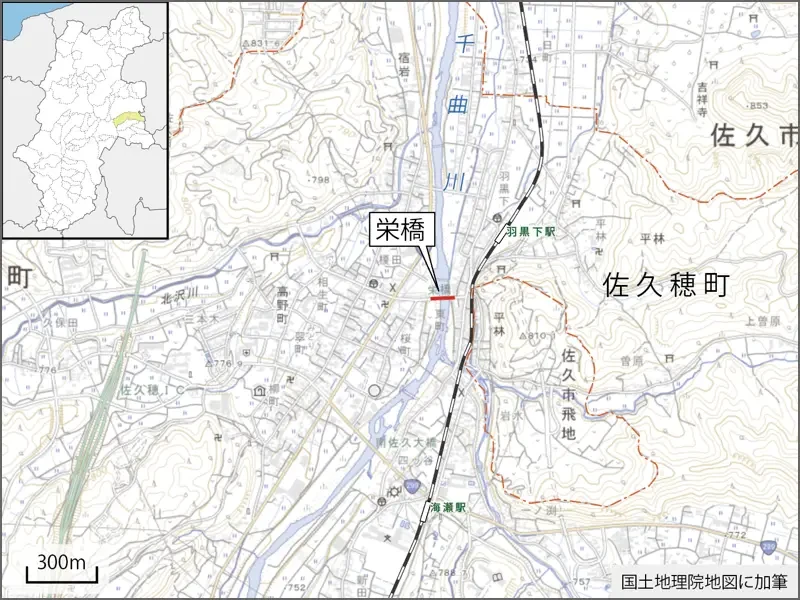
[Supplement]
The above text was written according to the explanatory signs, but there is also a record that the first wooden bridge was built in 1891. In any case, it is said that the bridge has been replaced many times due to flood damage. That is why a permanent bridge was desired.
Now let’s cross the bridge.
In front of the bridge, there are magnificent newels. On the right side is a plaque reading “Chikuma-gawa River” and on the left side “Sakae-hashi Bridge".
The bridge is 7.4 meters wide, with an effective width of 6 meters.
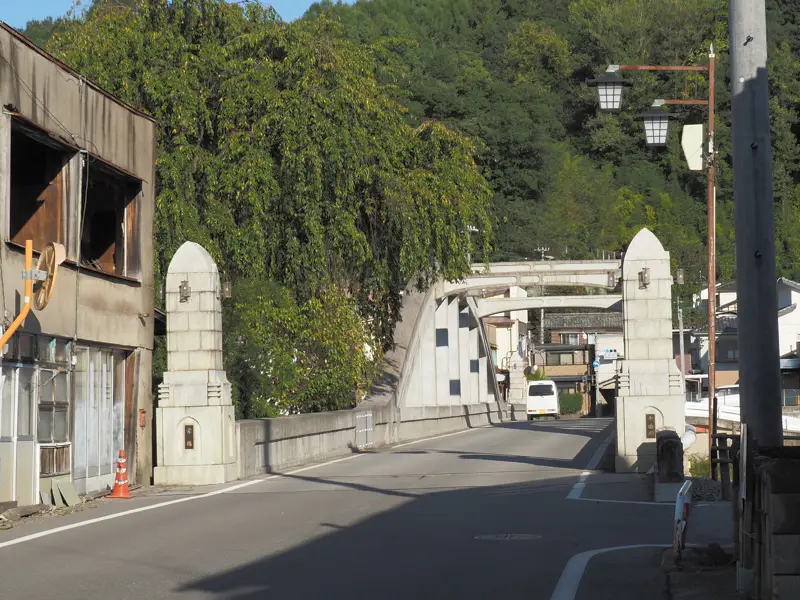
A “Civil Engineering Heritage” plaque is placed on the right side.

A view of the upstream side of the Chikuma-gawa River.
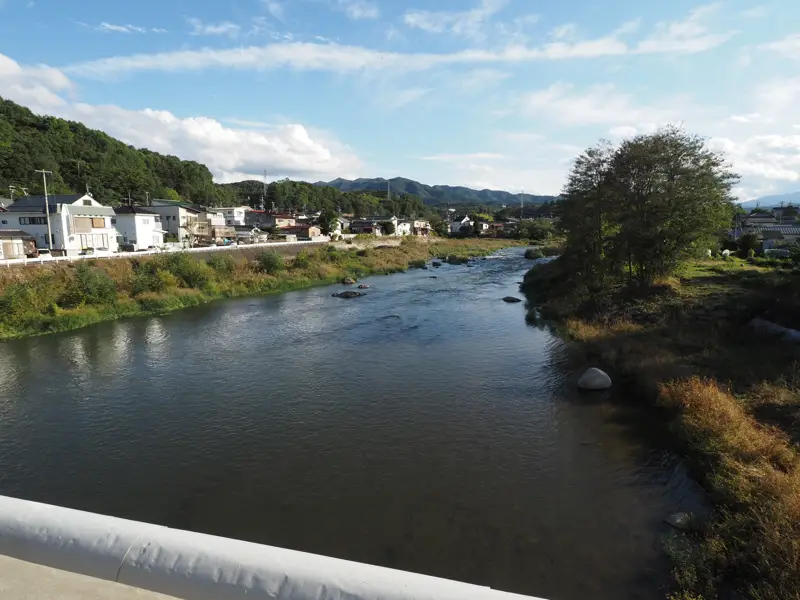
This is the downstream side. The bridge in the distance is the Yadoiwa Bridge, 450 meters away.
The name of the place around here is “Yadoiwa,” so it must have been named after it. However, there is already a bridge with the same name on Route 141, so although the pronunciation is the same, another kanji character is used.
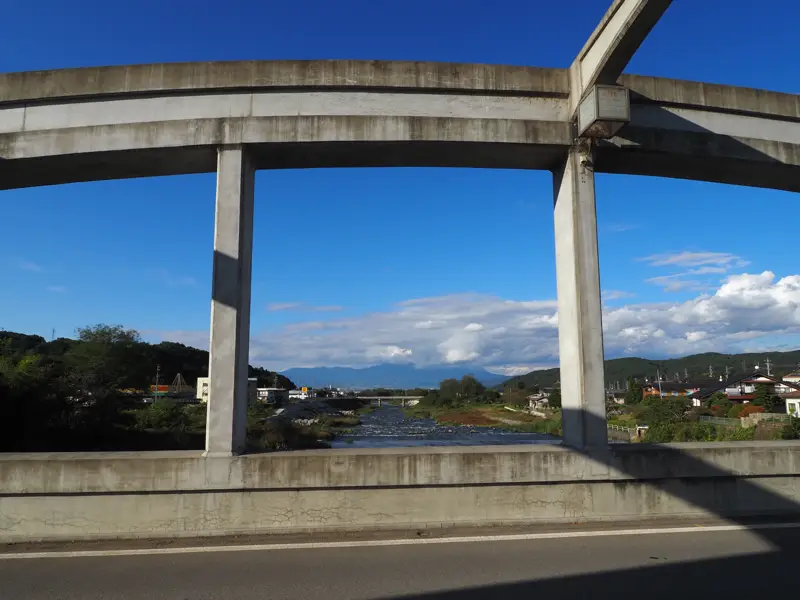
After crossing the Sakae-hashi Bridge, there are other newels on the east side of the bridge.
The newel on the right side of the photo reads “Sakae-hashi” and on the left side there is a plaque that reads “Completed in 1938″.
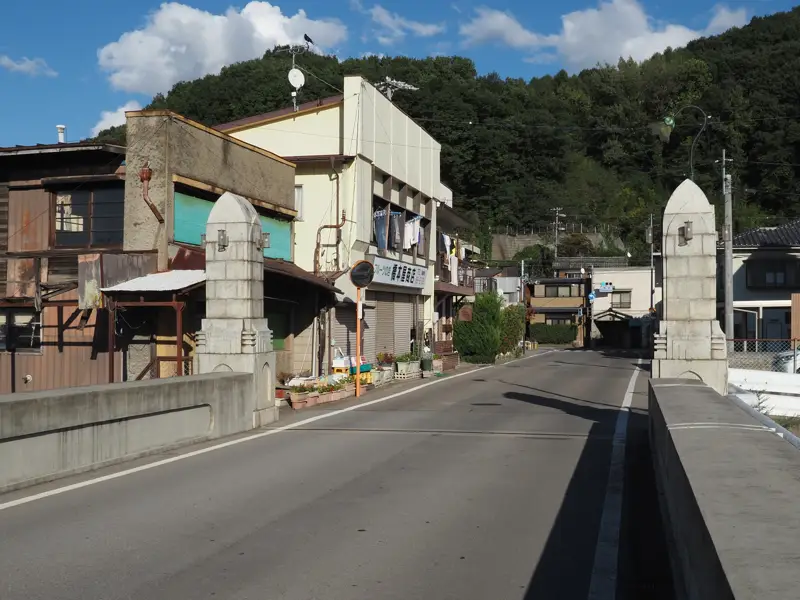
Walking along the right bank, I took this photo from a position where I could get a full view of the bridge.
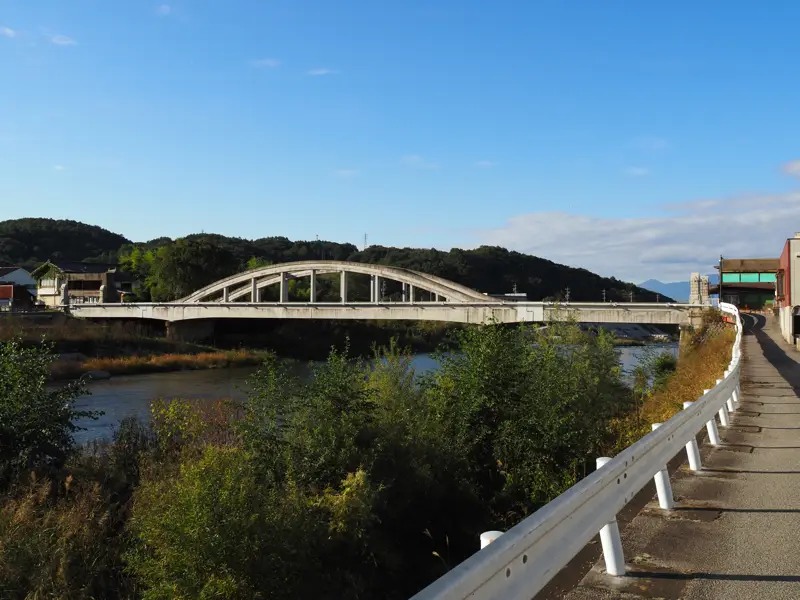
I returned and crossed the bridge again. There is no sidewalk, so when a car passes by, I stopped at the edge and waited.
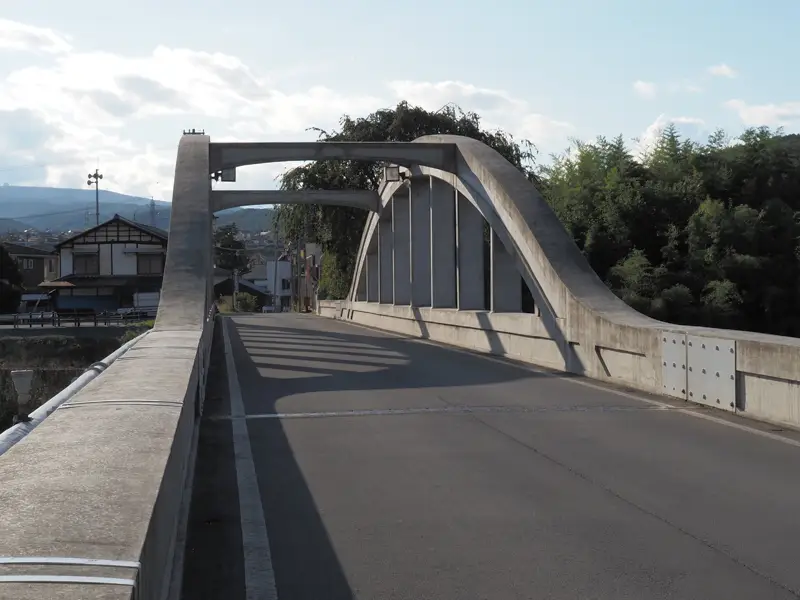
There is a small park on the left bank.
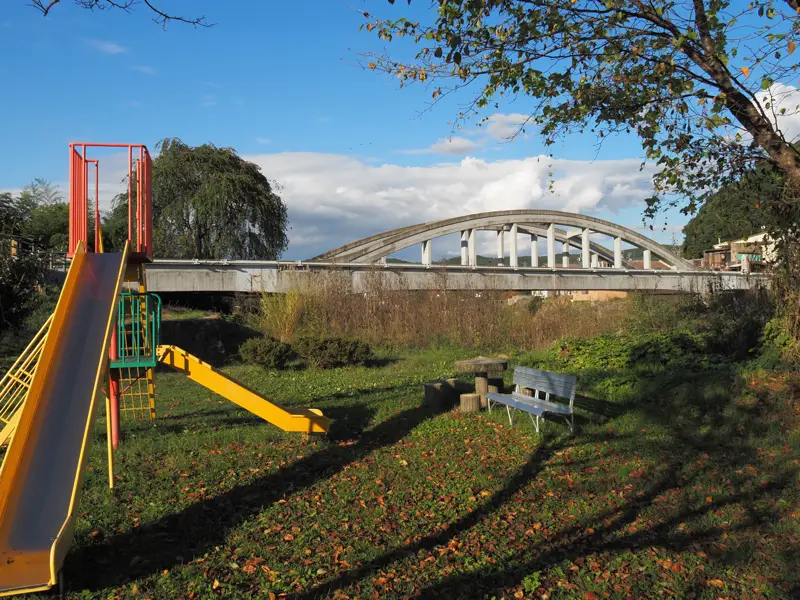
Let’s take a peek under the bridge.
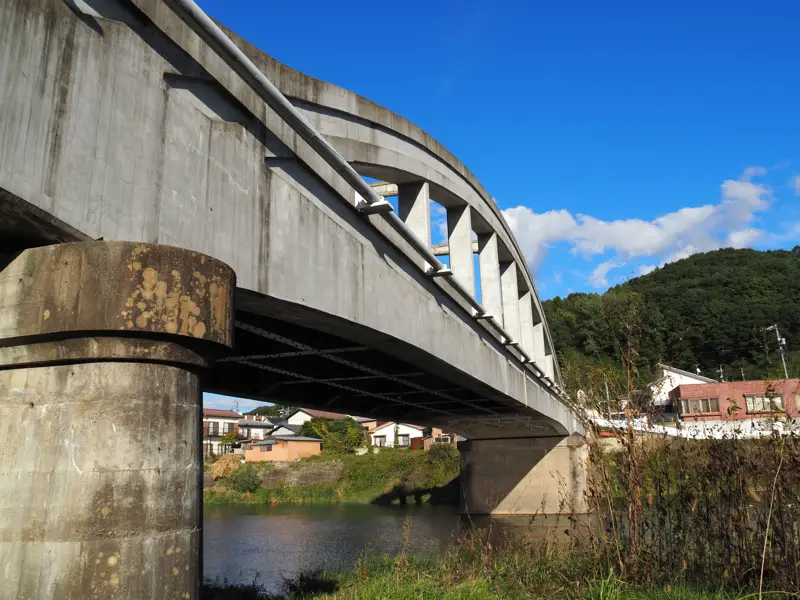
The RC girder has been reinforced with steel plates, probably installed during the repair work that began in 2012.
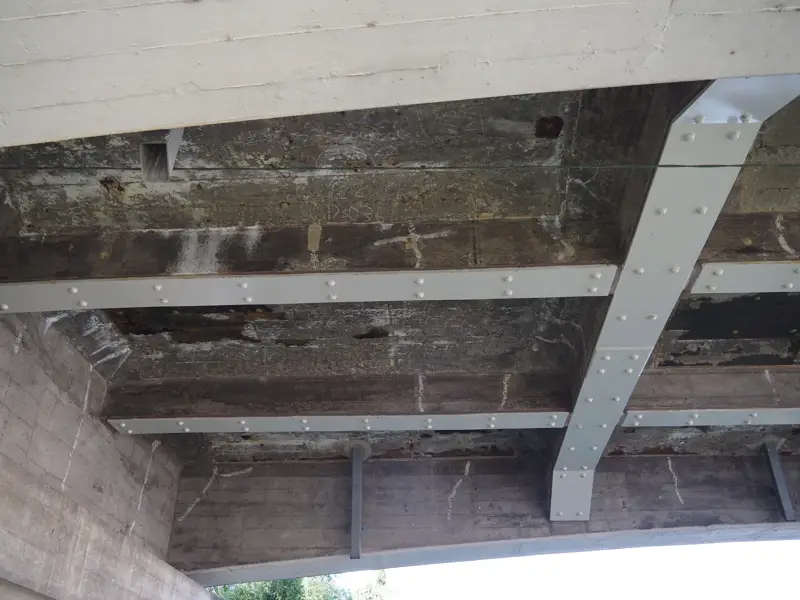
The reinforcing plates can be seen all the way to the other side of the bridge.
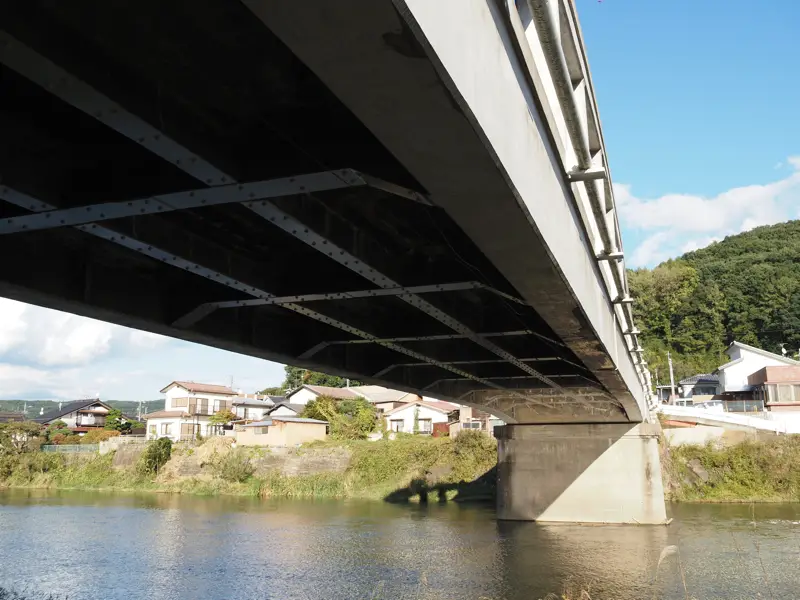
It was difficult to walk along the river because of the grass, so I left it here and returned to the road above.
As previously mentioned in another article, the following five bridges designed by Takeshi Nakajima are still in existence in Nagano Prefecture.
* Ote-bashi Bridge (Kiso Town) completed in 1936
* Oyasawa-bashi Bridge (Otari Village) completed in 1937
* Showa-bashi Bridge (Sakaki Town) completed in 1937, only three spans.
* Sakae-hashi Bridge (Sakuho Town) completed in 1938
* Himekaawa-hashi Bridge (Otari Village) completed in 1939
Of these bridges, Sakae-hashi Bridge is the only one that has such a magnificent newels.
This is said to be one of the largest newel in the prefecture.
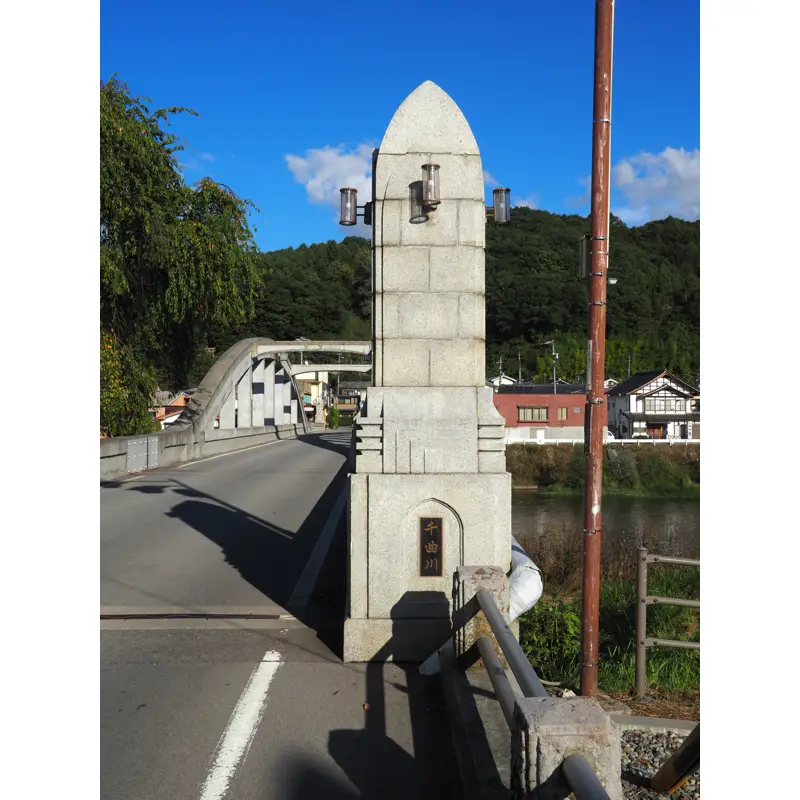
Looking at the other bridges, it seems that Nakajima did not emphasize the parent pillars at all.
As for Sakae-hashi Bridge, was there a request from the local community to make newels?
[Related articles]
“Oyazawa-bashi Bridge“ (2024-10-03)
“Showa-bashi Bridge (2)“ (2024-09-30)
“Showa-bashi Bridge (1)" (2024-09-29)
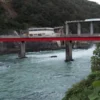

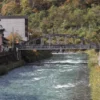
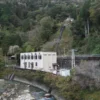
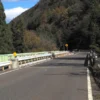
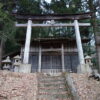
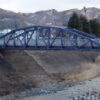
Discussion
New Comments
No comments yet. Be the first one!